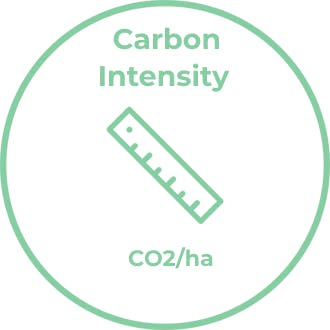Industry
Top 5 KPIs: Julia Jones

"It’s difficult to argue with science so if we’re all able to show the improvements through measure not only does it help with confidence at an individual level, it empowers us to tell the positive stories of our business and sector."
- Julia Jones, Head of Insight, NZX Limited
Julia Jones, Head of Insight at NZX, shares her favourite KPIs when thinking about farming through the lens of the consumer. The five KPIs outlined below relate to profit, planet and people and intersect with each other when looking at a business system as a whole, not just siloed KPIs.

EBITDA per Effective Hectare
It’s always important to measure profitability against the effective land area use. I think what sometimes gets lost by the wider public is that profit is necessary to enable investment into the environment. Which brings me to my next point, balance.
What good looks like very much depends on the type of farm system you are running. I don’t like to focus on this KPI in isolation - for me it's not about profit at all costs, it’s about achieving balance and long-term sustainable profit without compromising human, animal or plant wellness.
In order to continue to grow, or at least stay steady, we need to be able to drive systems that will cope if the amount of land in use is reduced.

Staff turnover
This is an important measure in any business. High staff turnover signals that there is a need for change somewhere in the people cog of the system. Like any KPI this shouldn’t be looked at in isolation. Lead indicators include excessive sick days, injury, loss in productivity.
Generally speaking, ‘good’ for turnover is deemed to be between 12% -20%. However, this does depend on the vision of a business. If, for example, I view my business as a training ground for younger people to learn and grow their skills before moving on to sharemilking or contract milker roles I would expect that I might have turnover as high as 50%. On the other hand, if my farming business was geared to creating opportunities for progression I’d expect it to be capped at 20%.
It’s estimated that the cost of losing a team member and training a new employee to operate at a good productivity level is about a year’s worth of salary. So it’s fair to say that there’s only upside for an employer to keep an employee happy and engaged.

Carbon intensity
This is the measure of carbon use across a business which can be either CO2/revenue, CO2/kgMS or CO2/ha and is a fantastic tool for combating the constant cry that ‘cows are killing the planet’.
There’s no two ways about it, we’re going to get asked about this (we already are), so let’s start measuring it. It’s important to invest in using an organisation that can support a verified measure (Toitu is one, and there are others out there to look at). What good looks like is determined by you and may take a few years to work out as you get used to the measurement and the levers in your control to make changes. The goal will be to reduce carbon intensity, which can be done at both small and large scale but done strategically to ensure you can still run your business and don’t drive staff away.
It’s difficult to argue with science so if we’re all able to show the improvements through measure not only does it help with confidence at an individual level, it empowers us to tell the positive stories of our business and sector.

Non-farming business connection
It’s easy to get engrossed in the business and end up in a bit of an echo chamber at times. We all do it, regardless of sector. Ensuring that you and your team have non-farming business connections is essential to keep the balance and to grow perspective.
The more perspective we grow the better we become at problem solving and the more agile our collective thinking becomes. This could be as simple as listening to podcasts or reading magazines that aren’t about farming and provide a completely different perspective or connecting with processors and learning more about the customer or supply chain. Training outside of farming, or connecting with other business people through the likes of chamber of commerce events could be another way to grow connections.

Animal Mortality rates
Animal welfare is a massive focus for consumers. The level of preventable mortality rates can be a key indicator into the wellbeing of an animal.
I do this by setting an average period that I’d expect cows to milk for prior to culling - say eight years - to demonstrate a pattern of animal health improvement. Included in this are any animals prematurely culled. Where there have been regular culls as a result of lack of production or health issues, animal wellness and genetic breeding programmes have been modified.
Technology plays a helpful role allowing us to monitor animals. It can also be a useful tool to verify the wellbeing of an animal.
Interested to see what others have ranked as their Top 5 KPIs?
Take a look at what other industry characters have defined as their Top 5 Farming Key Performance Indicators.